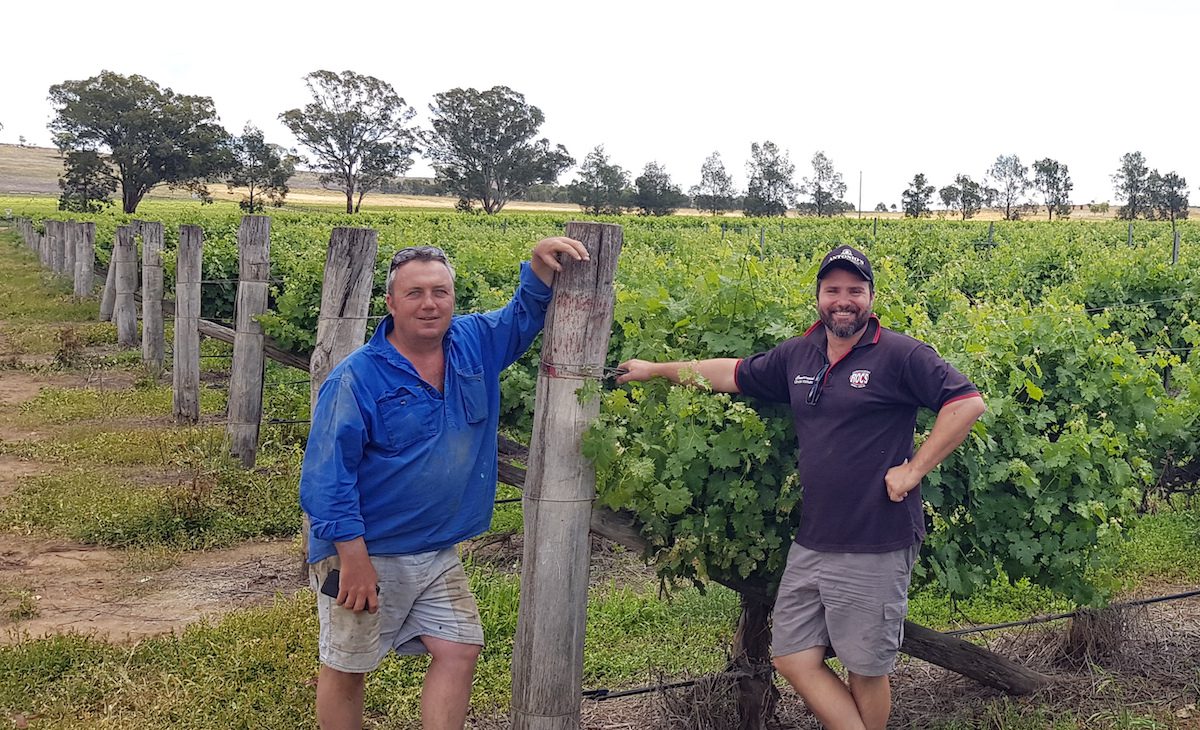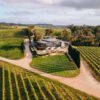
After the birth of their first child, Jason and Rebecca O’Dea weren’t keen on having chemicals around the house, especially with any drift from the vineyard settling on the roof and finding its way into the drinking water.
“It was then that we moved to organic farming,” says Jason, owner of the NSW wine brand Pig in the House.
“We have learnt much in 20 years of organic farming and have shifted our way of thinking.
“It continues to be a balancing act between nature and the farmer.”
A neighbour told Jason recently that when he started farming 50 years ago, he only purchased two drums of locally produced chemical for his entire farm.
Now an entire truck load, imported from all over the world, is delivered for the same area.
The farmer said, “I just don’t know where we go from here.
“Does that mean my children will require three trucks of chemicals to farm the same area?”
Jason says much of the vineyard management techniques are based around what has been done historically and how the vineyard ‘looks’ to the casual observer.
“This can include spraying herbicides continuously to kill anything else that grows in the vineyard,” he says.
“The result is a monoculture where only one plant grows in the ecosystem.
“This is a long way from creating a plant kingdom where many and varied plants interact.
“The interaction between insects and their predators is completely annihilated.”
Jason says farmers love the satisfaction of ploughing a field.
“Nothing looks better as you drive past than the flash of ‘brown-green-brown-green’ when every other row is ploughed,” he says.
“However, it has been proved that cultivation is terrible for the soil structure.
“Aside from the physical breakdown in structure, cultivation means death to fungi and soil-based critters that inhibit the soil structure.”
Jason says the loss of yield is the biggest barrier to more people converting to organics.
“It is true that yields from organically managed farms are lower (I have done parallel production experiments). The amount of yield reduction will depend largely on the number of organic inputs that are used,” he says.
“Again, this becomes a balancing act whereby allowable organic inputs can be costly and there comes a point when adding more organic inputs only creates a marginal increase in yield.
“As an example, 25kg of Urea (48 percent nitrogen) has the same amount of nitrogen as 400-500kg of chicken manure.
“The organic input cost, including application, is over seven times per unit of nitrogen.”
Winemaker Anthony D’Onise has noted that grapes grown on organic vineyards can display different characteristics to those conventionally grown.
“Competition for water and nutrients can reduce vigour and present issues such as over exposure, while the grape nutritional values need to be monitored to ensure good robust, clean ferments and wine maturation,” he says.
“Our goal is to make the best $20-25 bottle of NSW Shiraz; a modern style, with fruit driven and spice qualities.
“It is savoury enough for meals but enough flesh for enjoyment on its own, somewhat of a wine suitable for multiple occasions.
“The hard work and experience of working with the same fruit and adapting our techniques according to vintage conditions has created a consistently awarded Shiraz.
“Wine styles and wine drinking behaviour continues to evolve.
“Part of our winemaking philosophy is to be aware of these changes and build these into our winemaking plan.
“Over the last decade we have replaced winemaking inputs with vegan friendly products and have greatly reduced SO2 inputs.
“This includes making a range of ‘no added sulphur’ wines. We have also improved our recycling habits and continue with our regeneration project around the winery.”
“We continue to learn from our experiences in both the vineyard and the winery,” says Jason.
“Pushing the boundaries, trialing new ideas and constantly questioning what and why we do the things ensures that we are seeing progressive improvement in our wine quality and sustainability.”
The brand was named after the family home which was once owned by a farmer who was known to let his pig into the house.
“Well, that’s what my wife Rebecca said about the brand name,” Jason says.
Learnings from 20 years of organic farming
• Learn to live with unwanted plant species. Look at your vineyard as a living organism. Use beneficial plant species (legumes for example) to work with you. Establish under-vine species that are suited to your regional temperature and rainfall.
• Avoid cultivation at all costs. If sowing crops, the technology is now available for minimal soil disturbance. Give your soil fungi food and a great environment to thrive and they will reward you handsomely.
• Accept that yields will be lower and input costs will be higher. Know your costs and price your organic produce appropriately. There is a price premium for organics and in general consumers understand that the costs are higher, and the yields are lower. Consumers understand that what you are doing is better for the environment.
• Spend time in the vineyard and understand your specific sites. Understand how flavour develops in line with baume and changing vintage conditions. Monitor the nutritional value of fruit.
• Work with your fruit to bring out the best possible characteristics, learning what the country produces well and sustainably, and nurturing these natural attributes and characteristics as opposed to trying to force the wine to reflect a preconceived style.
• Innovate and experiment where possible ensuring quality remains the key focus.













Recent Comments